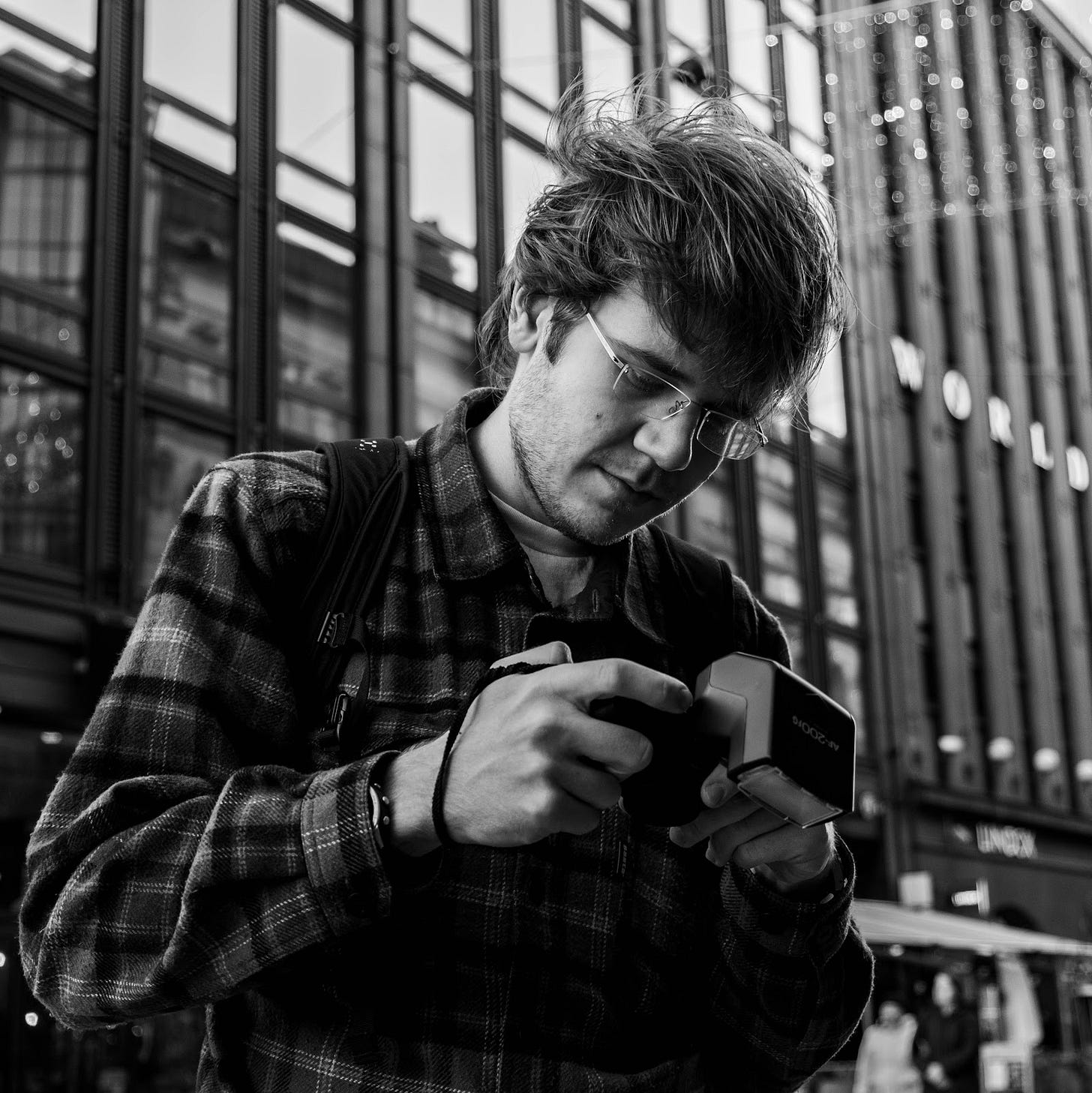The Dark Rooms of... Panu Kannisto
The Dark Rooms of... is an interview series in which a photographer talks about his or her darkrooms, the digital and the mental, or technical and inspirational. What makes you click?
In this edition of The Dark Rooms of… we focus on Finnish street photographer Panu Kannisto.
By the way, if you haven’t read the previous 7 interviews, you can find them in the archive.
Here we go.
Who are you?
I am Panu Kannisto, a 24-year-old photographer from Lahti, Finland. I've been living in Espoo for about 5 years now, where I'm studying for my Master's degree in electrical engineering at Aalto University. The question of identity is actually tricky, because depending on the context I could introduce myself as a photographer, a student or a reliability engineer. But as the years go by, I'm becoming more and more of a visual artist.
Technical
Do you think technique is important?
I think technique can play a big part in your work, but there has to be a reason behind it. You can use things like deliberate camera movements, bokeh, long exposures and so on. They should be a way to convey your message, not just a trick to take pictures that look cool on the surface. As my friend Victor sai…
Keep reading with a 7-day free trial
Subscribe to Darkrooms to keep reading this post and get 7 days of free access to the full post archives.





